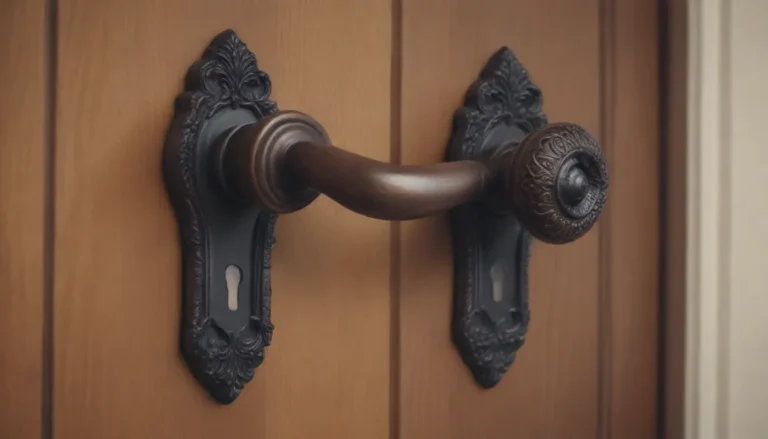The Inner Workings of Light Switches: Everything You Need to Know

Have you ever wondered how a simple light switch can control the lighting in your home with just a flick of a finger? In this article, we will dive deep into the world of light switches, exploring how they work, the different types available, and important considerations when replacing them. Whether you are a homeowner looking to make repairs or upgrades, or just curious about the mechanics behind this everyday device, this article is for you.
Understanding Light Switches
Let’s start by defining what a light switch is. A light switch is an electrical device installed in an outlet box mounted on the wall, used to control the flow of electricity from the power source to lighting fixtures or wall outlets. When you flip the switch, you are either closing or opening the circuit, allowing the current to flow or interrupting it.
How Does a Light Switch Work?
A light switch is designed with a mechanism that controls the flow of “hot” electrical current through a circuit. By toggling the switch on (closed) or off (open), you can control the power supply to the light fixture. Unlike other electrical devices, a light switch connects only to hot wires, not the neutral circuit wires. However, some switches, especially modern ones with additional features like timers or smart technology, may require a neutral wire connection.
When you open up a light switch, you will find different colored electrical wires inside. Each wire plays a crucial role in maintaining stable voltage and electrical flow. Here’s a breakdown of the wires you may encounter:
- White/Neutral:
- Black/Hot:
- Green/Ground:
Parts of a Light Switch
If you were to disassemble a light switch, you would find several key components:
- Metal strap
- Green grounding screw
- Switch body
- Wire connection terminals
- Inner gateway
Different types of light switches may have variations in their inner mechanisms. Older switches use mechanical components that can wear out over time, while newer switches may rely on microcircuitry for smoother operation and additional features like dimming or smart capabilities.
Types of Light Switches
There are three primary types of light switches used to control lighting fixtures: single-pole, three-way, and four-way switches. Each type serves a specific purpose and is designed to accommodate different wiring configurations in your home.
Single-Pole Switches
The most common type of light switch is the single-pole switch, also known as a single-location switch. This switch allows you to turn lights or outlets on and off from a single wall location. It is easily identified by the ON/OFF markings on the toggle lever.
Internally, a single-pole switch has a spring-loaded metal gate that opens and closes the electrical circuit to the light fixture. When you flip the switch on, the gate closes, allowing power to flow. Turning the switch off opens the gate, interrupting the power supply.
Three-Way Switches
A three-way switch is used when you want to control a light fixture from two different wall locations. This type of switch does not have ON/OFF markings on its lever. Three-way switches have three screw terminals: one common terminal connected to a hot wire, and two traveler terminals that link to the other switch.
Internally, a three-way switch has a mechanical configuration that allows electricity to flow through two traveler wires between the switches. This setup enables you to control the light fixture from either location.
Four-Way Switches
A four-way switch is used when you need to control a light fixture from three or more locations. It works in conjunction with two three-way switches in a circuit configuration. A four-way switch has four screw terminals and is essential for complex lighting setups in large rooms or open floor plans.
The mechanism of a four-way switch involves toggling the electrical pathway back and forth between the three-way switches. This allows you to turn the light on or off from multiple locations as needed.
Choosing the Right Switch
When replacing a light switch, it’s essential to select the right type of switch for your needs. Whether you’re installing a dimmer, timer, or smart switch, make sure it is compatible with your existing wiring setup. Here are some key considerations to keep in mind:
- Ensure the new switch has the same functionality as the old one
- Match single-pole switches with single-pole dimmers or timers, and three-way switches with three-way options
- Check the voltage and amperage ratings of the switch to ensure compatibility with your circuit
If you are unsure about replacing a light switch yourself, it’s always best to consult a professional electrician to ensure the job is done safely and correctly. DIY projects can be rewarding, but when it comes to electrical work, it’s better to err on the side of caution.
Cost of Replacing a Light Switch
The cost of hiring a professional electrician to replace a light switch typically ranges from $100 to $200, depending on the complexity of the project. If you choose to replace the switch yourself, the cost would be equivalent to the price of the switch itself. It’s important to remember that wires connected to a light switch remain live even when the switch is off, so always turn off the power at the circuit breaker before working on any electrical components.
In conclusion, light switches may seem like simple devices, but they play a crucial role in controlling the lighting in your home. Understanding how they work and the different types available can help you make informed decisions when it comes to repairs or upgrades. Whether you’re looking to replace a worn-out switch or explore advanced lighting options, knowing the inner workings of light switches is key to a well-lit and functional home.





